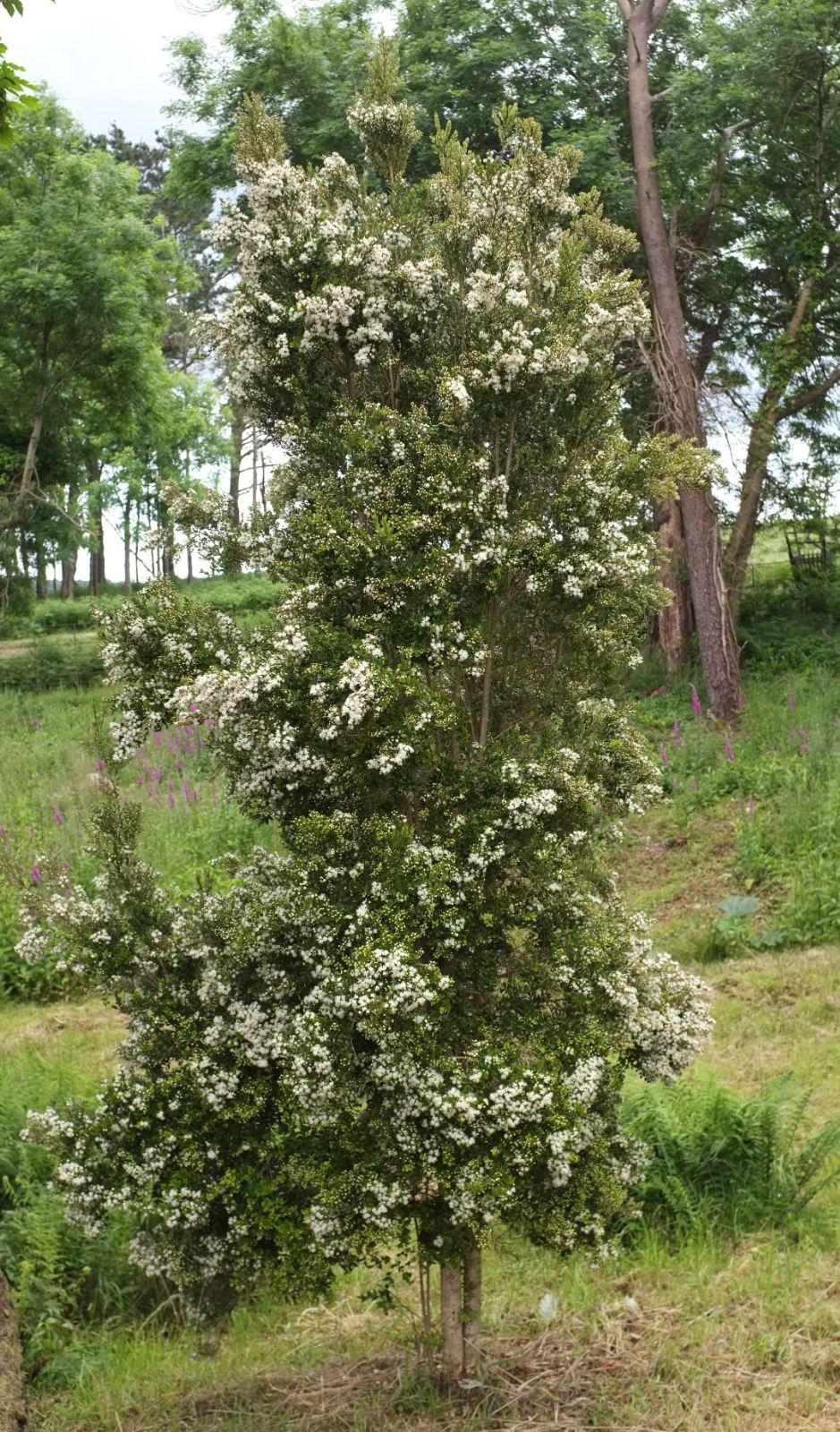Myrceugenia
Credits
Article from New Trees by John Grimshaw & Ross Bayton
Recommended citation
'Myrceugenia' from the website Trees and Shrubs Online (treesandshrubsonline.
Family
- Myrtaceae
There are 39 species of Myrceugenia, mostly in South America, but with two on the Juan Fernández Islands. They are small trees or shrubs, typically with reddish brown, yellowish or whitish branched or simple hairs on the branchlets, leaves and flowers. The leaves are opposite, leathery or membranous and with a prominent midrib. The inflorescence is an axillary dichasium or a terminal or axillary raceme; or, less often, a single flower. Bracteoles subtend the flowers until fruit set. The flowers are 4-merous with a shallow hypanthium; the calyx is four-lobed or the lobes are fused together into a cap-like calyptra, which is shed when the flower opens; the petals are small and the stamens numerous (approximately 40–500). The fruit is a fleshy berry containing one to five seeds. It is yellow, orange red or dark purple (Landrum 1981, 1984).
Myrceugenia is very poorly known in cultivation, but appears to offer considerable horticultural potential as a group of attractive and apparently reasonably hardy shrubs (Gardner & Hechenleitner 2005). They are immediately recognisable as myrtles, displaying the familiar glossy dark green leaves and masses of many-stamened white flowers, followed by an abundant crop of fruits in colours ranging from purple to yellow. New growth may be flushed red, as in M. ovata. A brief review of the genus was recently provided by Gardner & Hechenleitner (2005) but does not mention all the species currently cultivated in the United Kingdom. These include: M. chrysocarpa (O. Berg) Kausel; M. lanceolata (Juss. ex J. St.-Hil.) Kausel; M. leptospermoides (DC.) Kausel, considered to be the most attractive by Gardner & Hechenleitner (2005); M. ovata (Hook. & Arn.) O. Berg; M. ovata var. nannophylla (Burret) Landrum; M. pinifolia (Phil.) Kausel. Most are in the collections of the Royal Botanic Garden Edinburgh, derived from its numerous expeditions to Chile, and are not yet widely distributed. With the exception of M. planipes, Myrceugenia species are low-growing shrubs. Hardiness varies, but a sheltered site seems advisable.


